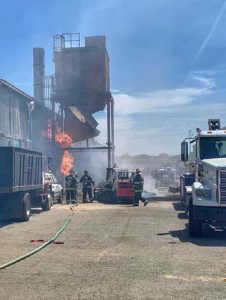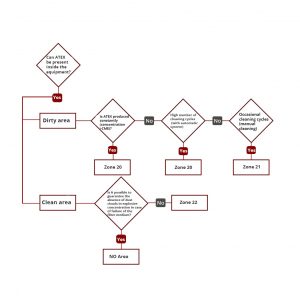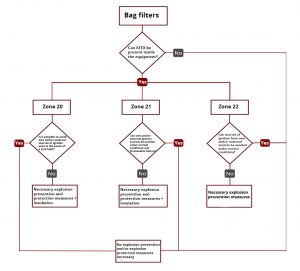20 years of experience at your service in protection
consulting and training in Explosive Atmospheres

Si no encuentras tu producto puedes consultarnos aquí
Añadido a la cesta
No hay productos en la cesta
(YOU CAN DOWNLOAD THE E-BOOK VERSION BY CLICKING HERE)
Dust extraction systems represent one of the main installations in industries handling powdery substances, mainly intended to control environmental dust emissions and thus reduce their contamination.
Bag filters are the main component of a dust extraction system and in solid-gas separation systems, and represent one of the main explosion risks in industries handling flammable dusts.
Carrying out a correct risk assessment of extraction systems, and specifically of bag filters, must be one of the main objectives in order to establish an effective strategy for dealing with the risk of explosion in our installations.
In order to carry out a correct assessment of the risk of explosion, we can use as a support some of the most widely used international standards of recognised prestige, among which we can highlight the following:

Explosion risk assessment:
A proper explosion risk assessment must include at least the following points:
Classification of potentially explosive areas in bag filters:

Notes:
(1): Due to cleaning cycles or the possibility of accumulation of dust layers inside the filter (including dust layers on the sleeves). MEC: minimum explosive concentration (g/m3). Examples: Sugar (30 g/m3); Starch (60 g/m3); Wood (30 g/m3). Data obtained from the GESTIS-DUST EX database: https://staubex.ifa.dguv.de/explosuche.aspx?lang=e
(2): An automatic cleaning system is considered to be any system that is carried out by means of pressurised air, either by means of a timer or a differential pressure system, or any system that is carried out by vibration or mechanically or requires activation by means of an external pushbutton. Manual cleaning involves stopping and opening the equipment as well as disassembling and cleaning the filter media.
Effective ignition sources:

Fig 2. Common ignition sources (source: INRS and donaldson.com)
Recommended preventive and protective measures:
Considering the possible presence of explosive atmospheres on a virtually continuous basis and the variety of ignition sources that can become effective, the probability of an explosion occurring in a baghouse is high and its consequences can be catastrophic for installations and people.

Preventive measures:

Fig.3. Schematic of assessment of the type of measures needed
Protection measures:

Fig.5. Baghouse protection systems
(YOU CAN DOWNLOAD THE E-BOOK VERSION BY CLICKING HERE)
20 years of experience at your service in protection
consulting and training in Explosive Atmospheres
Personalized assistance in more than 30 countries.
Our customer service works to offer you the best solution.
Shipping.For more information here
Worldwide shipping.
Insurance included and return guarantee
Ask our sales team without obligation.
News on your company's protection
Be the first to know when new products are launched